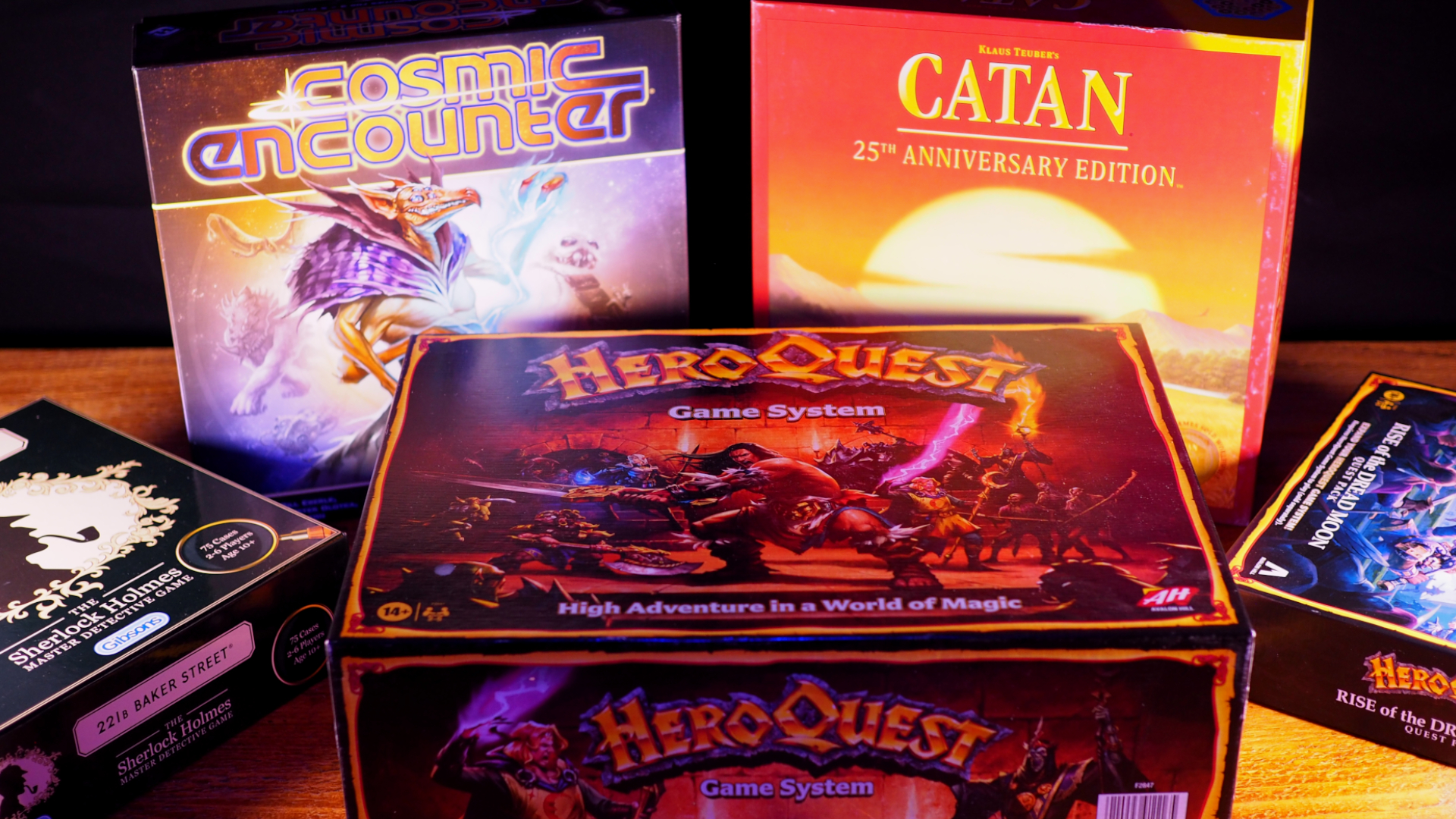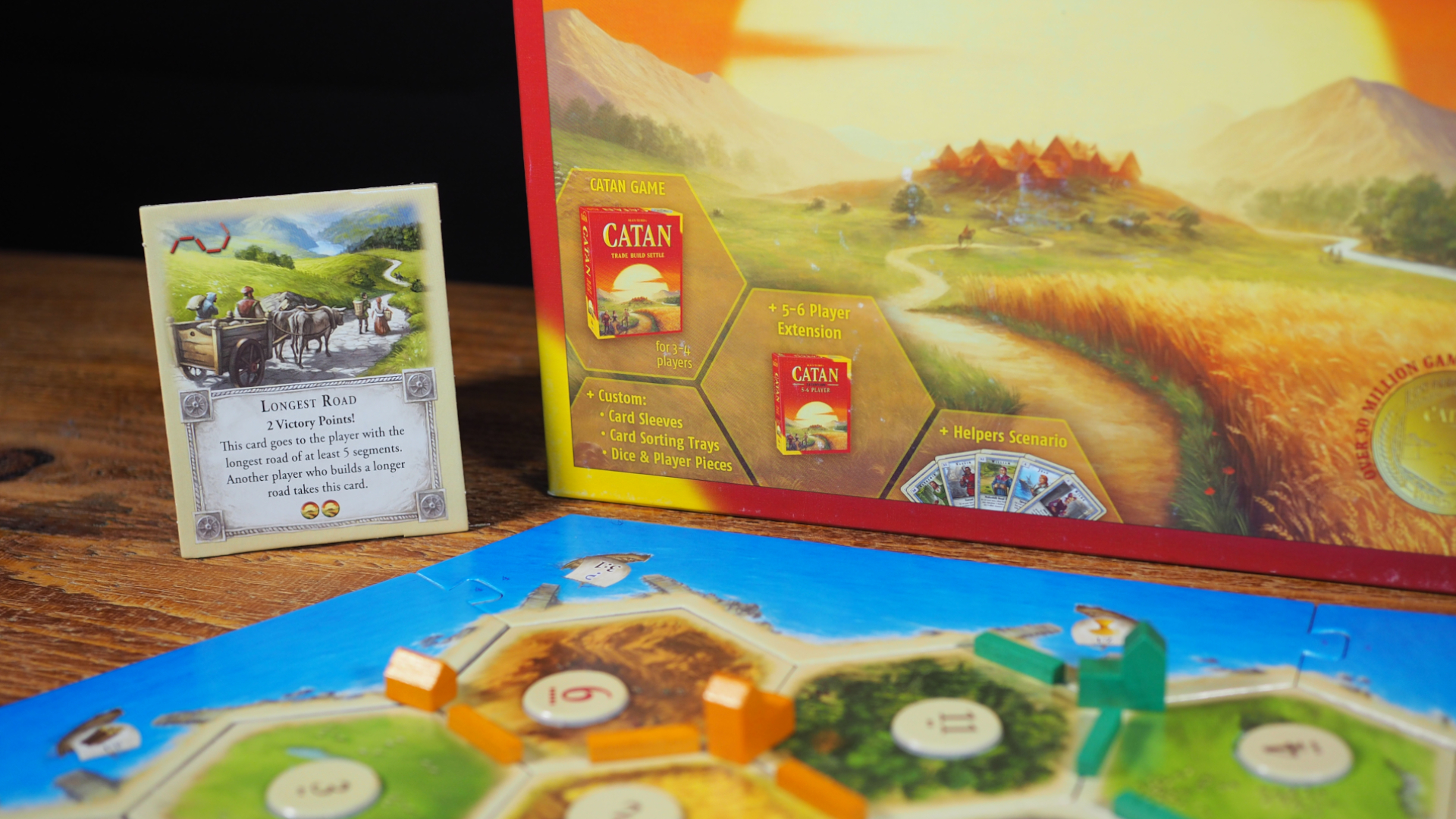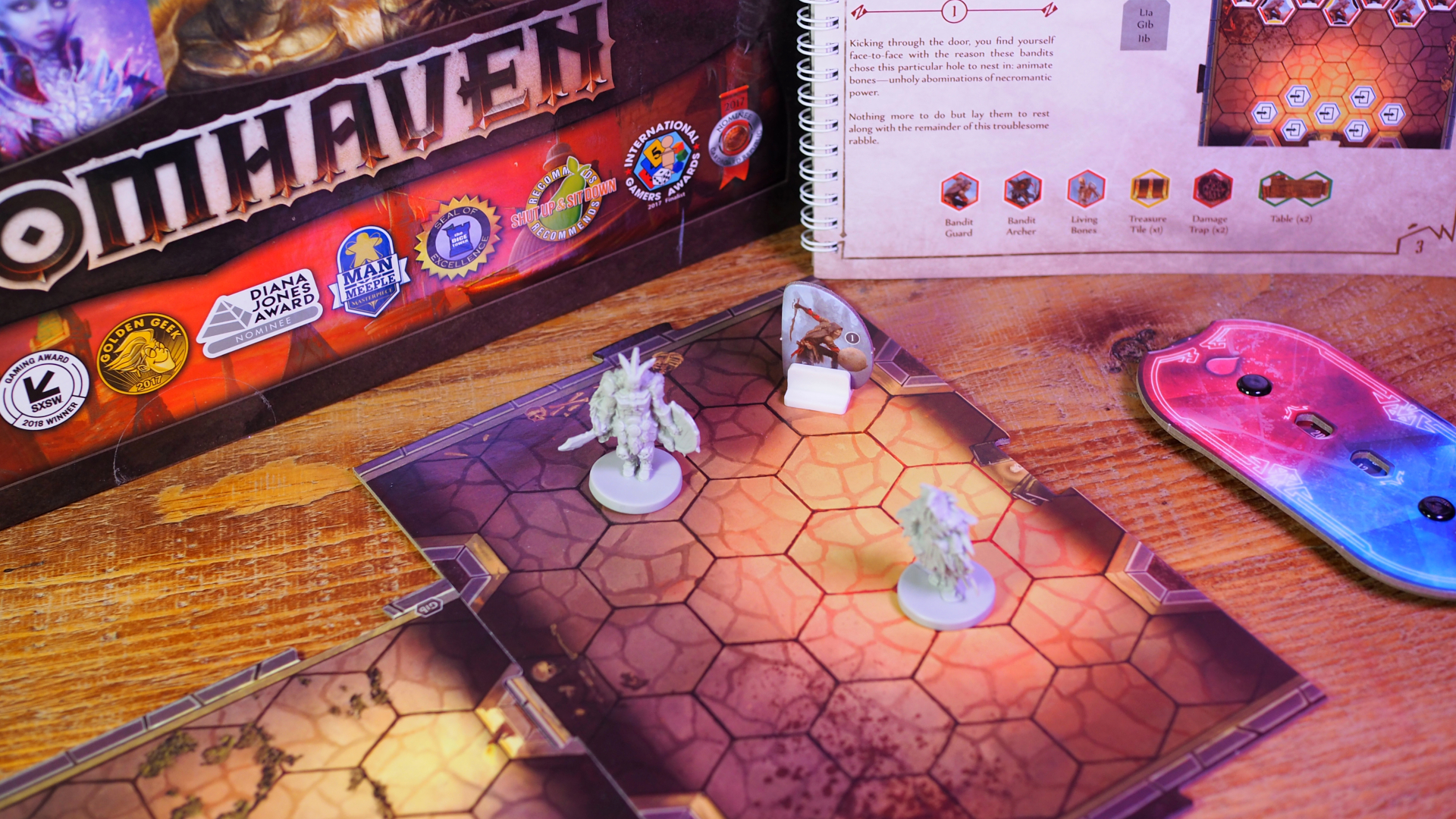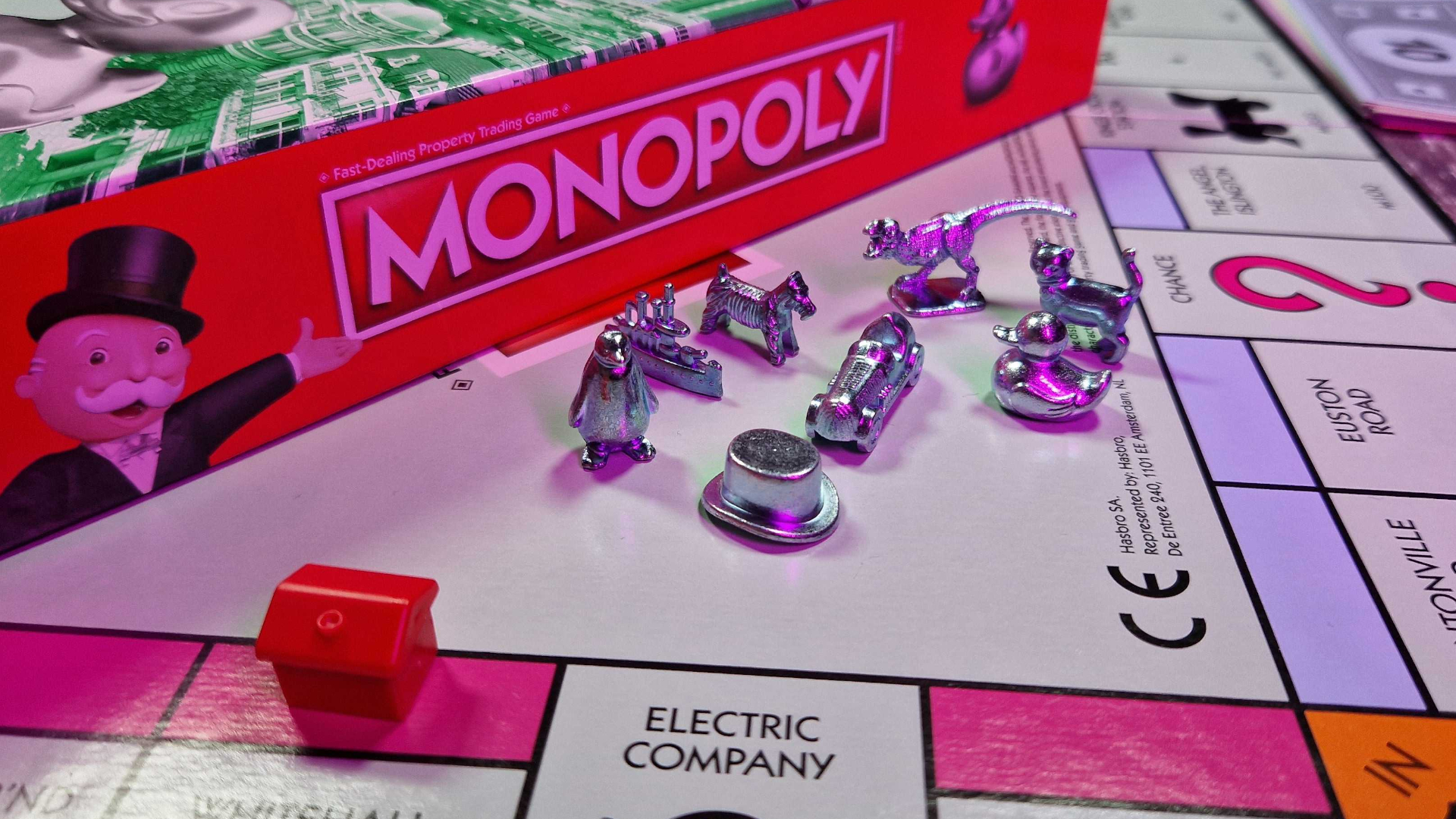Play is a fundamental part of life. It’s not just people that play; many animals do too, and most of those play well into adulthood. It’s no great surprise, therefore, that we find evidence of that particular, peculiar practice of structured play that we call board games alongside the earliest human artifacts. Archeologists have unearthed 11,000-year-old slabs of limestone with parallel roles of pits or holes that they’ve tentatively suggested might be boards for a Mancala-like game. That’s about 6,000 years older than Stonehenge. And, of course, who knows how long before that people had been playing games with sticks or pebbles on boards scratched in the dust of their dwelling places?
We reach firmer ground when we come to the dawn of recorded civilization. Babylonians played the Royal Game of Ur. Egyptians played Senet. People all around the world played with knucklebones, cubic bones that were used as an early form of dice. One curious thing about many early games is that they seemed to serve some sort of fortune-telling or ritualistic function. Knucklebones were certainly used for divination, as was the Game of Ur, and while the rules of Senet are uncertain, it appears to have links with the Egyptian journey into the afterlife. At some point, however, these trappings were lost and people began to enjoy them solely for the strategy and excitement they provided. This leads us on a straight path to today’s best board games.
Staying power
It’s perhaps surprising how many games of antiquity have come down to us into the modern day. Backgammon is very ancient, as is Go and a far more obscure, but still played, game called Nine Men’s Morris that was played by the Romans. Its distinctive board of concentric squares has been found carved onto Roman building sites and Renaissance church cloisters across Europe alike, as ordinary folk tried to fill their downtime with play by whatever means necessary. Chess is more recent, having likely been invented in India around the sixth century, although the game we know today is somewhat different from that original version. Playing cards are a similar age, and hail from ninth century China, probably starting life as money tokens for a different game. They, too, have diversified hugely from their starting point, not only in terms of the number of different games that can be played with them but in form: different countries across the world have different decks.
These formed the staple of gaming for most of Europe for an astonishingly long time, right through until the eighteenth century. What made the change was the invention of mass manufacturing, which made it possible for people to design and produce more complex games and bring them to the mass market at a low enough cost to make a profit.
Games can be so much more. They can be bigger than the box – they’re a lifestyle
Eric M. Lang, designer of more than 20 games
Victorians tended to focus on moralizing roll and move types of board games, educational quizzes and the like as a means of self-improvement, particularly for children. However, the birth of games as a simulation also dates from this era with Kriegspiel, a universal wargame designed as both a teaching tool and recreation for officers in the Prussian army.
Those Victorian templates dominated gaming for another hundred years. Monopoly is recognisably a game of this type, although it has a rather bizarre history. Its inventor was an American progressive called Lizzie Magie, who entitled her original The Landlord’s Game in 1903, and created it to make a satirical point about the negative impact of land ownership and monopolies. She self-published it, and it proved quietly popular, until one day a man called Charles Darrow played it. He repackaged it, stripping out the satirical elements and sold it to Parker Brothers as his own invention, a glorious celebration of American capitalism, and made a fortune which was, appropriately enough, stolen entirely off of someone else’s labor.
The birth of hobby games

While everyday households had been enjoying Monopoly and other mass market designs, there was a quiet undercurrent of more serious games that owed a debt to Kreigspiel and also the long standing hobby of playing war games with miniature model soldiers. Some of these were recognisably simulationist, starting with Gettysburg in 1958, which sought to allow players to recreate that battle on their tabletop. That same year saw the somewhat more accessible and abstract game Tactics in which the ‘red’ and ‘blue’ nations fought over an imaginary land mass demarcated with a square grid on which to move their forces. Other well-known games that crossed this boundary include Risk, invented in 1957 by a French filmmaker, and the negotiation game Diplomacy, released in 1959, which was reputedly Henry Kissinger’s favorite game.
Miniature wargames famously gave rise to Dungeons & Dragons – now widely seen as one of the best tabletop RPGs – in 1974 via a set of fantasy rules called Chainmail that allowed players to focus on building their own heroes. And these kinds of military simulations and the burgeoning sci-fi and fantasy of the role-playing market created the nascent hobby board gaming market between them. There are a slew of highly influential games from this cross-pollination such as 1980’s Titan, a bizarre but brilliant game where players recruited stacks of increasingly powerful monsters while moving round a semi-abstract board of obtuse movement patterns, seeking to sometimes evade, and sometimes corner and attack, other player’s creature collections. Other well-remembered games from the ’80s include fantasy adventure game HeroQuest, Space Hulk (Games Workshop’s title of battling monstrous aliens), and Survive: Escape from Atlantis, in which players sought to navigate their pieces away from a collapsing island.
Amidst all these games centered around violence and conflict, however, one man was quietly lighting an entirely different torch. Sid Sackson was an American designer who was a rarity at the time in making his living out of creating games. He favored much less aggressive themes, and many of his games were abstract in nature, including a couple of ’80s classics still played today: push your luck dice game Can’t Stop and deal-making affair I’m The Boss. But his real landmark contribution to design came earlier, in 1964, in the shape of business game Acquire, in which players try to make a profit by growing and merging hotel chains. While this sounds a lot like Monopoly, in practice it’s a much richer, deeper, and far more innovative game of mathematical and spatial strategy, in which piece colors represent different chains rather than individual players.
Titles such as Acquire had a particular appeal in a market where violent games were heavily frowned upon. Reeling from the terrible damage its fascist government inflicted on the continent during the Second World War, Germany frowned upon games that glamorized conflict: indeed there were and are laws in the country restricting the ways that violence can be portrayed in games. And Germany is a nation of game-lovers: sitting down to an after-dinner game is a common national pastime, particularly among families. As ever, the combination of desire for something which was governed by strict social and legal codes proved a potent source of innovation: German game designers began to invent a wholly new style of game that looked nothing like those commonly enjoyed in the English-speaking world.
In with the new

It’s hard to trace a single game that’s progenitor for this style, but translated examples began to appear in the early ’90s. One such example that generated a bit of a bow wave is Adel Verpflichtet, a hard to translate title that has been republished in English as Hoity Toity, By Hook or by Crook, and Fair Means or Foul. Whatever title it rejoices under, it’s a structured guessing game in which you get an edge by correctly anticipating whether your opponents are buying antiques at an auction room or squirreling them away at their mansion. But while these little glimpses of the forthcoming explosion were fun and novel, one game was waiting in the wings to kickstart the revolution. That game was Settlers of Catan, and it got its English release in 1996.
Now known simply as Catan, it changed board games forever. The game used the probability curve of two dice to decide which hexes on a randomly-constructed island would generate a resource. Players with settlements next to the productive hex would get the associated resource, which they could spend on expanding their network of roads and villages, securing more resources and, hopefully, eventually winning the game. It was noteworthy for a whole series of genius moves, chief amongst them being a brilliant combination of considered strategy with enough red-blooded interaction to excite those more used to conflict-driven games. While there was no actual fighting, securing key spots and denying them to other players was very much a part of play, as was hard-driving negotiation over resource trading.
Toward the end of the 20th century, it felt like Catan was everywhere, but in truth its influence was only just beginning. In the early years of the new millennium, designers from all over Europe and America began to cross-pollinate this new style of play with the more aggressive, random games familiar to English-speaking audiences. The result was a smorgasbord of delectable novelty, leading to an apex in the mid to late noughties of outstanding designs, a golden age of quality which has yet to be beaten by our current golden age of quality and popularity.
A few games from this era are particularly noteworthy, either for their success or their impact on wider design culture. In the former camp we’ve got the unstoppable freight train that is 2005’s Ticket to Ride, leveraging the familiar set collection of Rummy in the aid of grabbing train routes on a map, an addictive combination that’s steamed into a mass-market smash. Ticking both boxes is Pandemic from 2008, in which players work together to save the world from a plague of horrible diseases. It didn’t invent the cooperative model, but it simplified and popularized it, proving a big hit with hobbyists and family play alike and launching dozens of imitators. Early followers were not that great but, over time, co-op design has advanced to the point where current cooperative board games have eclipsed the original, at least for enthusiast players.

Another trend-setter from 2008 that’s been even more superseded by its imitators is Dominion. Owing a clear debt to another gaming juggernaut that we’ve skipped, largely because it’s a hobby and a history in its own right – Magic: the Gathering – Dominion tried to take the deck creation aspect of that collectible game and turn it into a game in its own right. You’d start with a bare-bones deck and use those cards to buy better cards to shuffle which, in turn, gave you the opportunity for even bigger swing turns. Now known as deck-building, this mechanic was revolutionary and briefly took over the entire hobby. Dominion itself, however, feels rather dry and repetitive in retrospect. Following designers took the concept and blended it with other mechanics to create much more interesting games.
While the sheer pace and breadth of innovation on display in this time couldn’t possibly be sustained, there have been a couple of noteworthy attempts in more recent years. In 2011 we got the first legacy game in the form of Risk: Legacy. Not only was this an excellent overhaul of that rather creaking classic, it invented the idea of each set launching a unique campaign for the players, with the results of each session feeding into the next to the point of players renaming continents on the board with permanent markers, destroying cards and using stickers to make irreversible changes to the components. At the end of a Risk: Legacy campaign, your game was entirely unique, allowing you to carry on playing on your own personalized set. The concept has been ported to many other games, including Pandemic.
Whether you feel comfortable with socializing with other people or not, a game provides a way to engage. If you know the rules you don’t even necessarily need to speak the same language
Richard Garfield, creator of MTG & King of Tokyo
More recently, there have been a slew of games that incorporate a digital app, starting with a tabletop adaptation of the XCOM series from 2015. These are mostly cooperative games in which the app is used to plan and conduct enemy turns, sometimes with added bells and whistles, such as the narrative stylings of Descent: Legends of the Dark and the puzzles of Lord of the Rings: Journeys in Middle-Earth. The use of apps in board games is divisive, with some purists feeling that it risks obsolescence, and spoils the tactile and social pleasures afforded by physical game play.
Current board game releases are dominated increasingly by big Kickstarter campaigns, often with lavish stretch goals for extra content or cool miniatures. It’s a landscape that’s launched a lot of fine titles but which rewards fancy marketing over innovative design. Despite some inspiring work from auter designers like Cole Wehrle and Amabel Holland, it feels like the glut of titles that we’ve been enjoying have been treading water in terms of moving the medium forwards. But, just like waiting to see what your opponents will do in a board game, part of the pleasure of studying the history of board games is the anticipation of wondering what might come next. For all we know, the next chapter of game design could be just a box flip away.
Want some recommendations on what you should play next? Check out the best 2-player board games, or the best card games.





